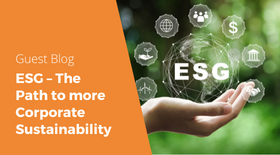From the Desk of Martin Gooch, CEO: Value Chain Management International Inc.
In a prominent position in my PhD professor’s office sat a quote attributed to Henry L. Mencken: “For every complex problem there is an answer that is clear, simple, and wrong.” It is a pity that this statement is not on every bill board around the world, particularly given how pundits are pushing simplistic solutions to address environmental and ecological issues relating to packaging without considering the implications.
In the ongoing discussions surrounding packaging, particularly plastic packaging, and nations’ commitment to reducing carbon emissions, the potential implications of having restricted the food industry’s ability to provide consumers with safe, nutritious and affordable food – while satisfying increased market demand for convenience — often get overlooked.

Only the most ardent head-in-the-sand sceptics believe that the packaging value chain does not need to fundamentally change. Yet that change must reflect systems thinking. The concept of systems thinking is a principled approach that has been used for decades to examine, then address, complex problems completely, effectively, and sustainably.
For a case in point we need look no further than the relationship between food and packaging. Value Chain Management International (VCMI) estimates that, in Canada and the US, the greenhouse gas (GHG) footprint that results from uneaten food going to landfill is greater than the GHG footprint of food packaging. Add the enormous GHG footprint of food waste, regardless of its destination, and food packaging’s GHG footprint is comparatively minuscule.
I do not need to describe what would result from the food industry’s access to effective packaging being limited by well-intended though poorly conceived policies. I also do not need to describe why green-washing rather than addressing the true root causes of why packaging has become vilified by social activist groups concerns is the industry’s Achilles heel.
Optimizing the packaging system—to minimize all wastes, decrease the environmental impact of packaging and food value chains, and attain maximum value from natural resources—rests on strategically and operationally aligning three distinct elements (often called sub-systems), which together determine the sustainability of circular packaging systems. These are:
- Products (e.g. readily recyclable packaging solutions – not “merely” the recyclability of individual materials);
- Process (e.g. standardized materials, adherence to pre-determined specifications); and
- Infrastructure (e.g. curbside collection programs, recycling facilities).
Optimizing packaging systems will result in considerably less food waste, along with considerably more environmental and ecological benefits than could otherwise be attained. The opportunities are enormous, so too is the business case. It could spawn economic growth in countless ways.



